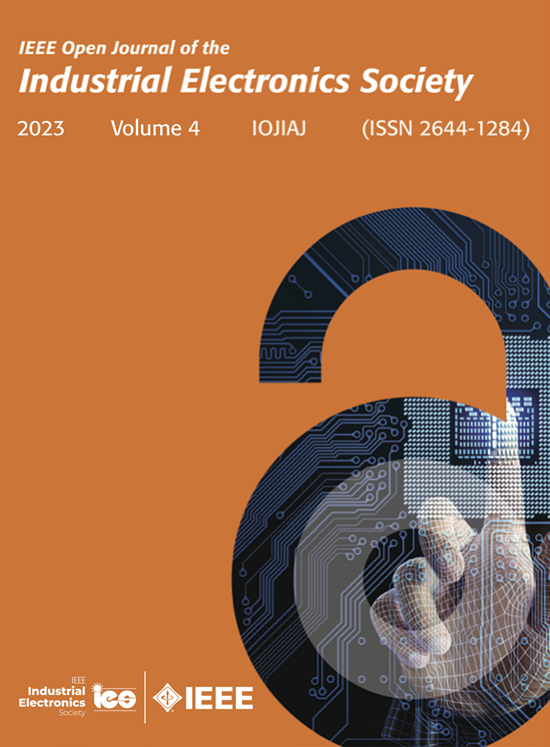Improving Speed Regulation of a Permanent Magnet Synchronous Motor Using Modified Model Predictive Control With an Adaptive Second-Order Disturbance Observer
IF 4.3
Q1 ENGINEERING, ELECTRICAL & ELECTRONIC
IEEE Open Journal of the Industrial Electronics Society
Pub Date : 2025-03-04
DOI:10.1109/OJIES.2025.3547767
引用次数: 0
Abstract
In this study, we propose a modified model predictive control (MMPC) approach combined with an adaptive second-order disturbance observer (ASDO) for efficient speed control of permanent magnet synchronous motors in the presence of unknown disturbances, such as system parameter variations and external load torque. The MMPC incorporates feedforward reference compensation (FFRC) and a posterior constraint compensation (PCC) technique. When the motor operates on a nonconstant velocity profile, the FFRC technique reduces the tracking delay associated with conventional MPC methods. In addition, the PCC technique addresses control signal constraints under a step velocity profile without requiring the solution of complex optimization problems at each time step, thereby reducing the computational effort for the controller. Furthermore, the ASDO utilizes a second-order disturbance observer to enhance the robustness of the MMPC. An adaptive observer bandwidth algorithm is proposed to minimize random noise and current ripple. The performance of the proposed methods was evaluated by applying them to an industrial motor drive, confirming their validity and practicality in real-world operations.利用带有自适应二阶扰动观测器的修正模型预测控制改进永磁同步电机的速度调节
在这项研究中,我们提出了一种改进的模型预测控制(MMPC)方法,结合自适应二阶扰动观测器(ASDO),用于存在未知扰动(如系统参数变化和外部负载转矩)的永磁同步电机的有效速度控制。MMPC结合了前馈参考补偿(FFRC)和后验约束补偿(PCC)技术。当电机在非恒定速度剖面上运行时,FFRC技术减少了与传统MPC方法相关的跟踪延迟。此外,PCC技术解决了阶跃速度剖面下的控制信号约束,而不需要在每个时间步上解决复杂的优化问题,从而减少了控制器的计算量。此外,ASDO利用二阶扰动观测器来增强MMPC的鲁棒性。为了减小随机噪声和电流纹波,提出了一种自适应观测器带宽算法。将所提方法应用于工业电机驱动,验证了其在实际操作中的有效性和实用性。
本文章由计算机程序翻译,如有差异,请以英文原文为准。
求助全文
约1分钟内获得全文
求助全文
来源期刊

IEEE Open Journal of the Industrial Electronics Society
ENGINEERING, ELECTRICAL & ELECTRONIC-
CiteScore
10.80
自引率
2.40%
发文量
33
审稿时长
12 weeks
期刊介绍:
The IEEE Open Journal of the Industrial Electronics Society is dedicated to advancing information-intensive, knowledge-based automation, and digitalization, aiming to enhance various industrial and infrastructural ecosystems including energy, mobility, health, and home/building infrastructure. Encompassing a range of techniques leveraging data and information acquisition, analysis, manipulation, and distribution, the journal strives to achieve greater flexibility, efficiency, effectiveness, reliability, and security within digitalized and networked environments.
Our scope provides a platform for discourse and dissemination of the latest developments in numerous research and innovation areas. These include electrical components and systems, smart grids, industrial cyber-physical systems, motion control, robotics and mechatronics, sensors and actuators, factory and building communication and automation, industrial digitalization, flexible and reconfigurable manufacturing, assistant systems, industrial applications of artificial intelligence and data science, as well as the implementation of machine learning, artificial neural networks, and fuzzy logic. Additionally, we explore human factors in digitalized and networked ecosystems. Join us in exploring and shaping the future of industrial electronics and digitalization.
 求助内容:
求助内容: 应助结果提醒方式:
应助结果提醒方式:


